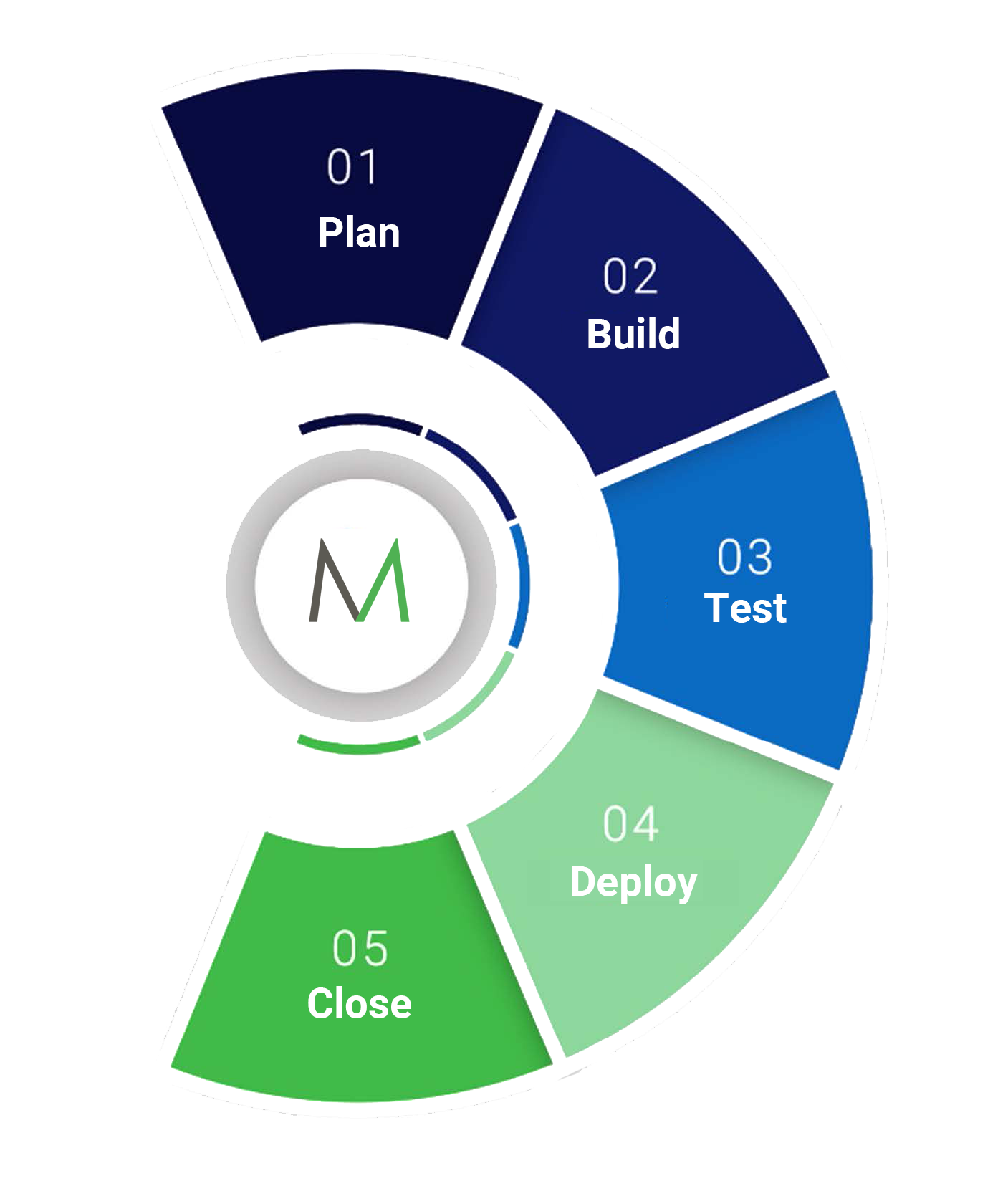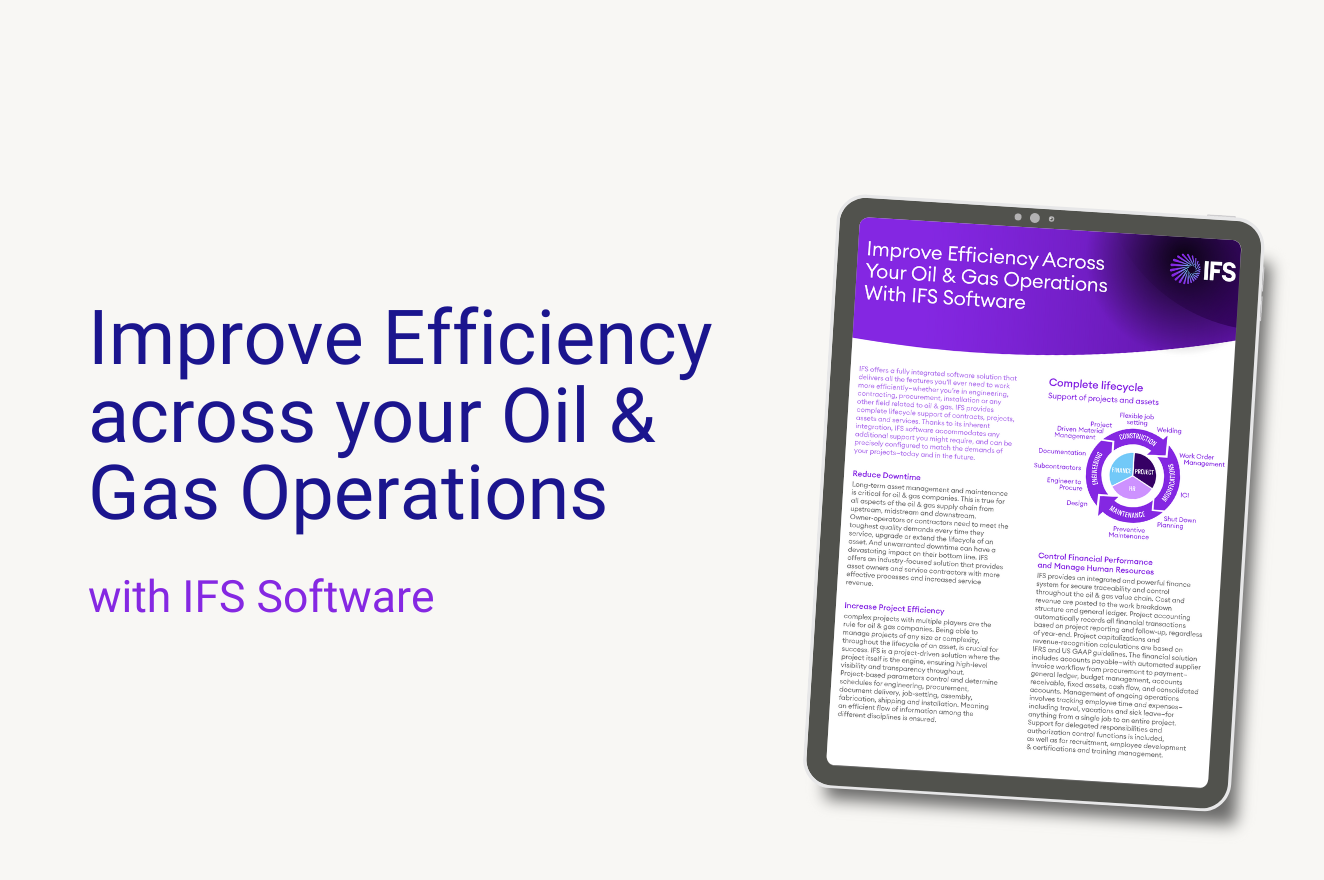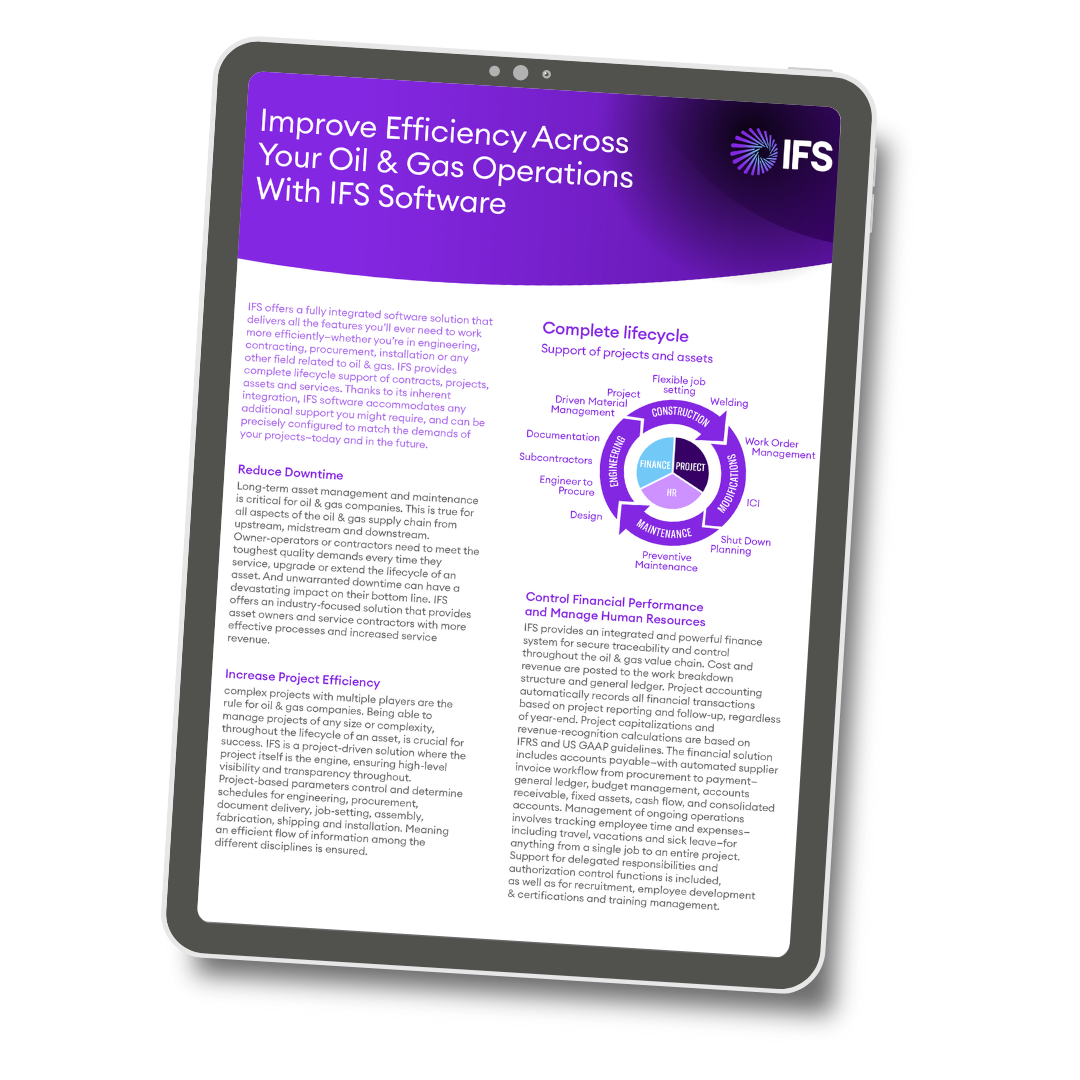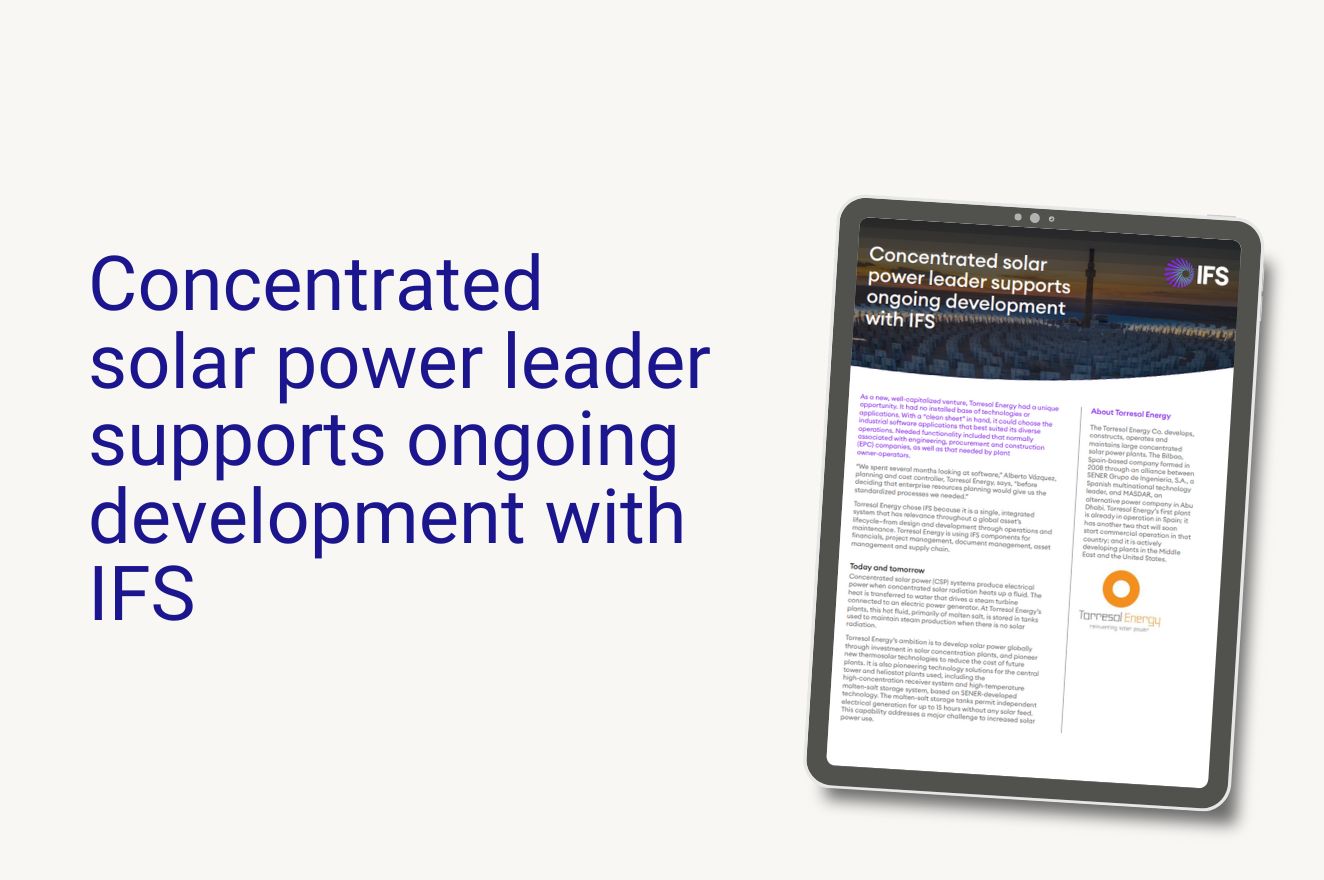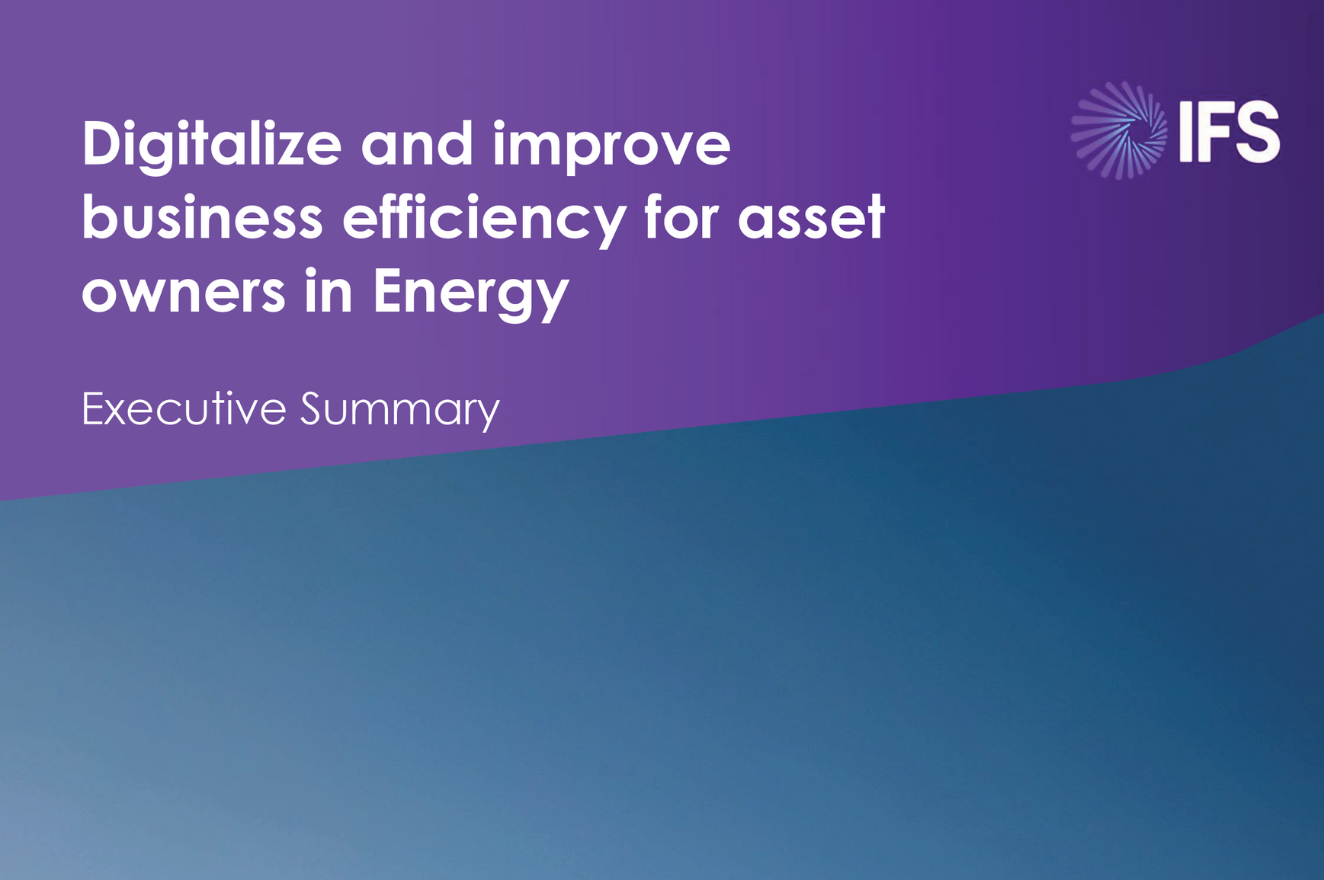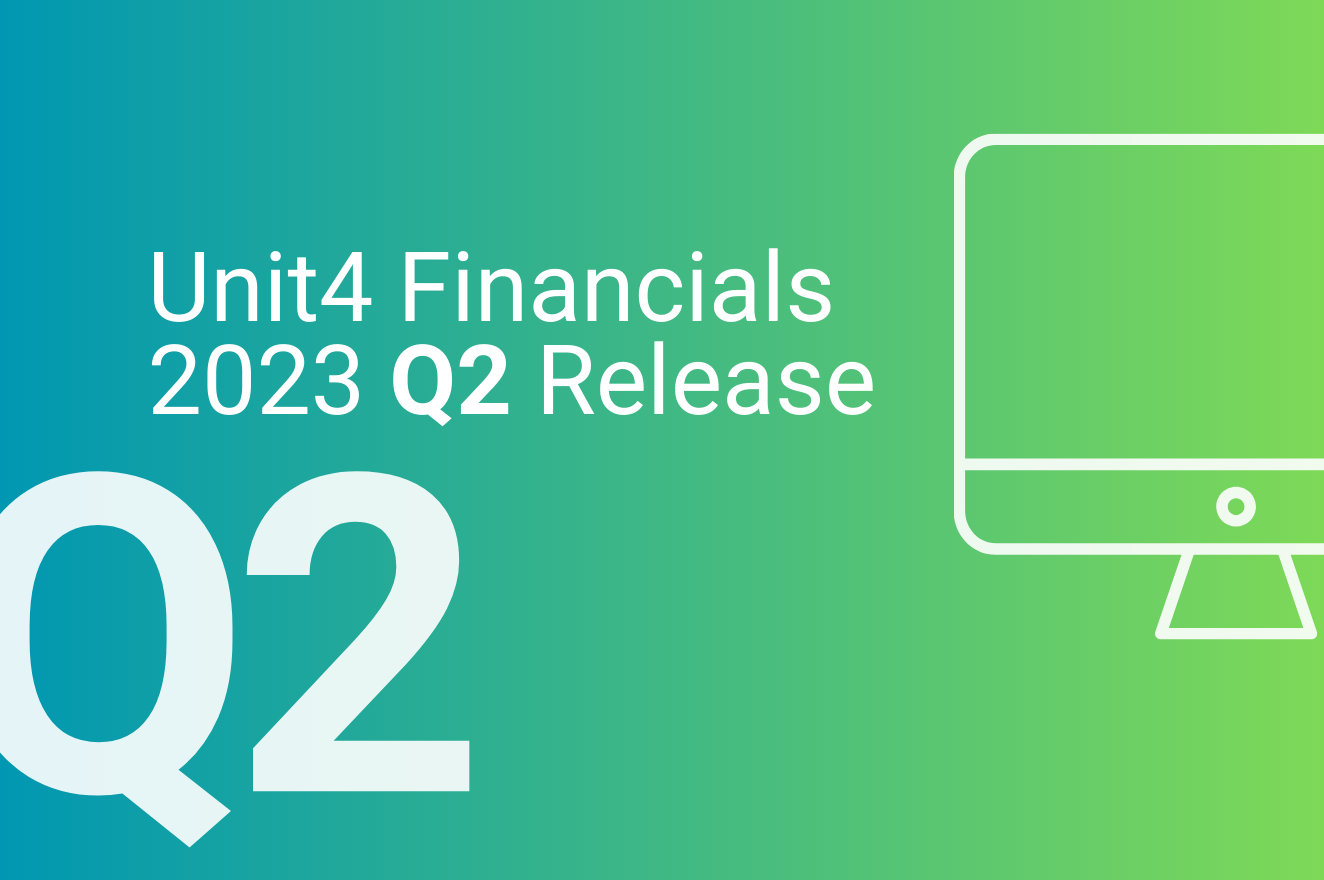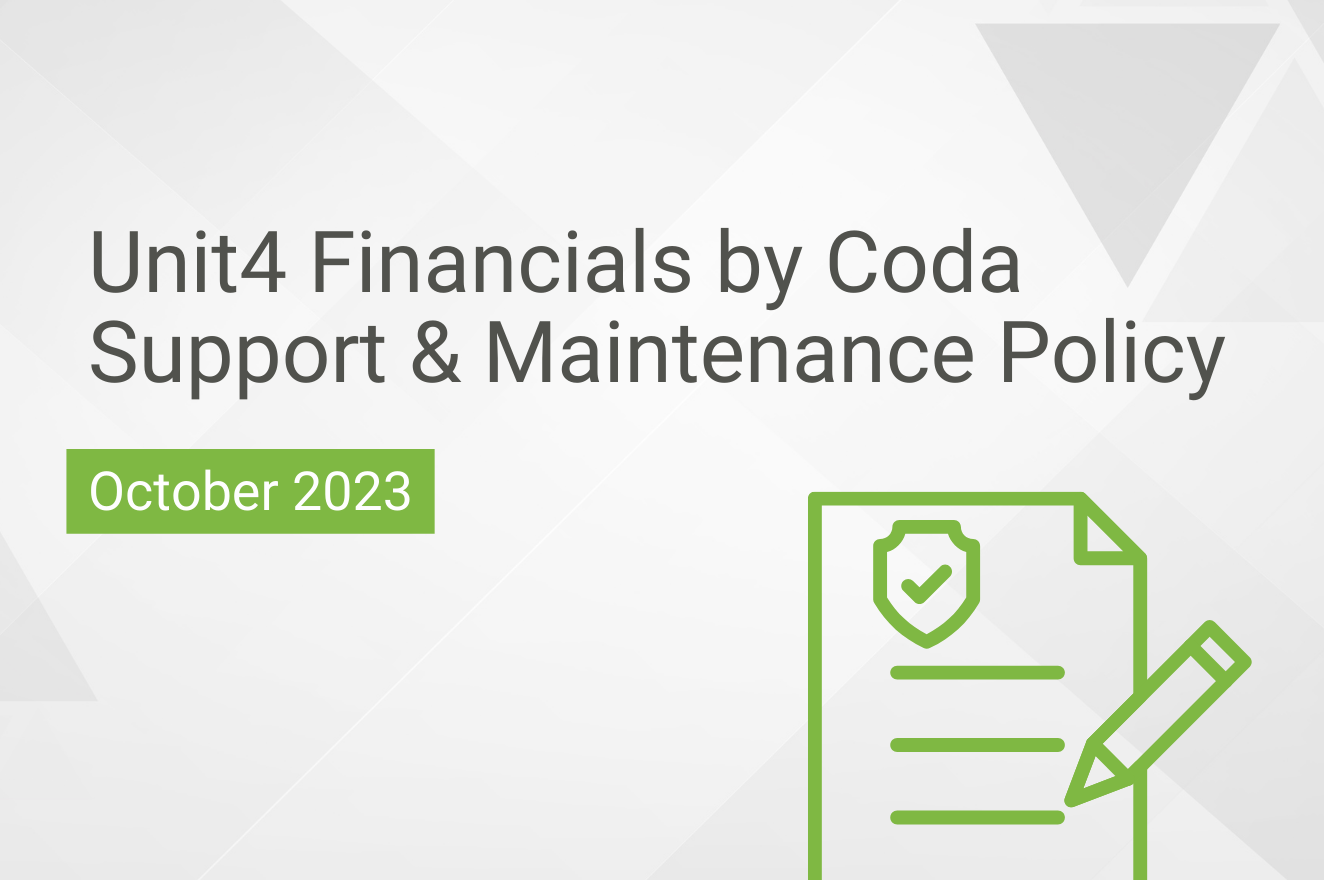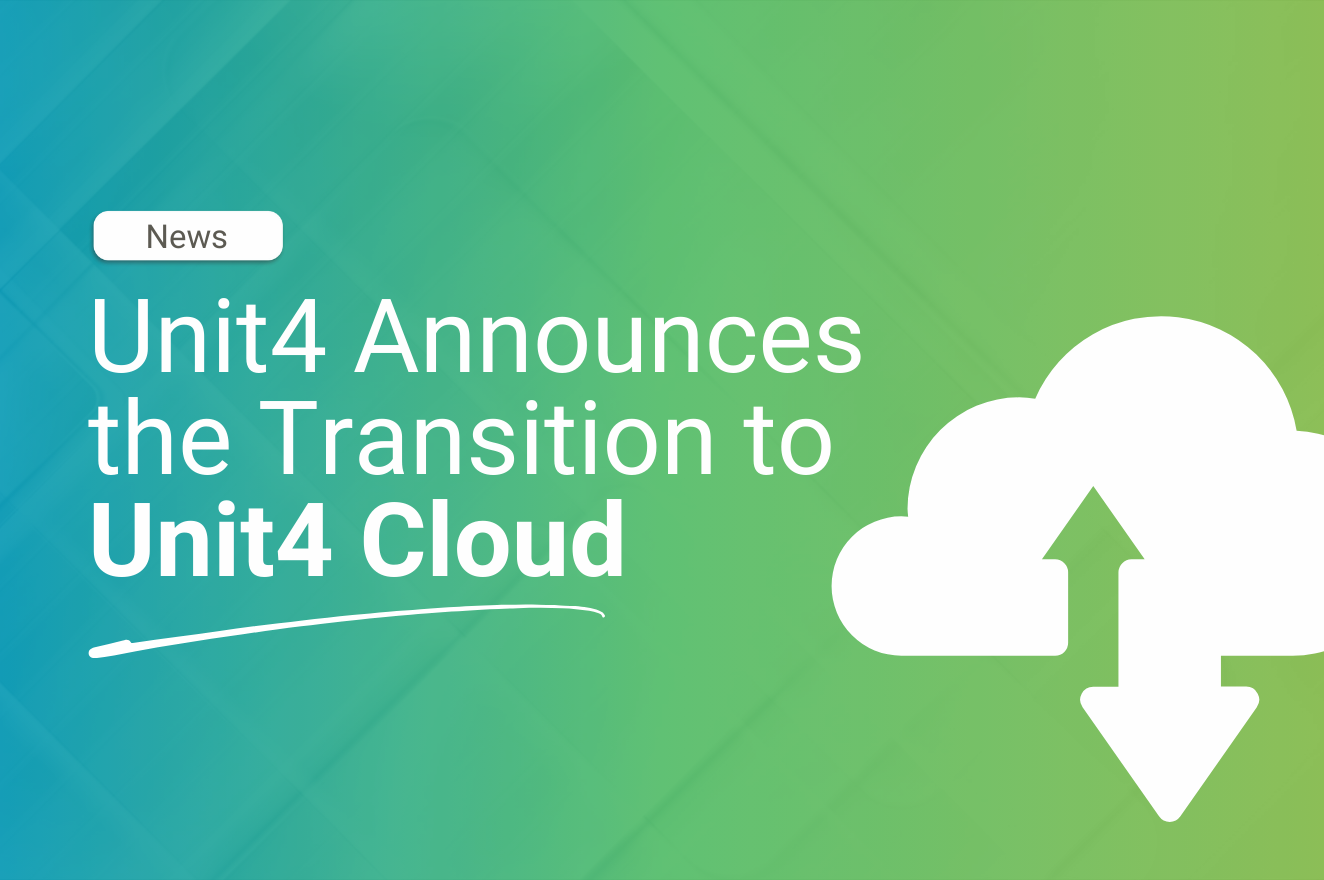The benefits of FP&A Lite for Unit4 Financials
FP&A Lite
July 2023
The benefits of FP&A Lite for Unit4 Financials
Unit4’s add-on, FP&A Lite enables you to perform ad-hoc, self-service analysis on your profit & loss, balanced sheet, and cash flow statements on a central, secure, and connected environment. All are tightly integrated with your financial data source, Unit4 Financials by Coda, to boost trust and agility in analysis and decision-making.
Read on to discover the benefits of this easy-to-use, easy-to-deploy analytics solution for your finance function and for the wider business.
The go-to analysis tool for many organisations is Microsoft Excel. So, for instance, if you are a Unit4 Financials user and you want to interrogate your underlying financial data, the old way of doing things tends to involve using the Excel add-in to connect to the solution, pulling the data out, and then applying Excel’s filters, pivot tables, formulas, diagrammatic representations, and other tools.
Analysis through Excel is, however, a largely manual process; one that’s often both time-consuming and resource intensive. No matter how careful you are with validation, errors are pretty much inevitable. Even a minor mistake (e.g., the wrong input in the wrong cell or accidentally swiping over a range) can have major consequences for decision-making, resource allocation and, ultimately, your bottom line. Meaning you are unable to trust the data on which you base the financial health of your organisation.
Financial analysis is a collaborative process involving multiple team members. Excel, however, was devised primarily as a personal productivity tool; it was never designed to support multiple users working with the same data simultaneously. Multiple users working simultaneously on spreadsheets, increases the risk of versioning issues, questions over accountability, accidental cell changes and other errors, to name a few.
FP&A Lite delivers an effective and efficient alternative to this common business critical challenge. Instead of having to manually extract data into Excel, the solution provides a single, fully integrated platform for analysis. FP&A Lite reports directly on both actual and budget data from your Unit4 Financials system and seamless drill-through to underlying transactions comes as standard. No longer do finance team members need to contend with Excel’s structures and calculations. Instead, you get a self-explanatory, easy-to-access framework for analysis and reporting where complex data is simplified into meaningful insight for better decision-making.
Gartner defines self-service analytics as a form of business intelligence (BI) in which users are “enabled and encouraged to perform queries and generate reports on their own, with nominal IT support”.
This approach to analysis is focused squarely on data democratisation, i.e., giving finance and line-of-business professionals the ability to drill into the data – even if they do not have a background in statistical analysis and devising formulae. Ultimately, it’s about giving users instant answers to queries and rapid insight into critical business trends to boost productivity and agility.
Legacy systems – particularly those reliant on spreadsheets – are often a barrier to self-service. The lifting and shifting of data is often a cumbersome, time-consuming, and error-prone process; not what you need if you’re looking for rapid answers on a tight timescale. What’s more, the ability to carry out effective analysis is limited to those members of the team who are confident in using Excel’s formulas and toolset.
FP&A Lite opens the door to self-service analysis. Self-explanatory dashboards give you an instant and varied view of what’s happening across your various profit & loss, balance sheet and cash flow statements. Alongside this, a choice of various dynamic, interactive visualisations supports native drill-through to the underlying transaction data to truly gain an understanding of outliers and data behaviour. All of this makes it much easier to make sense of the information behind your statements, to spot trends, generate reports and make better-informed decisions – all without the need for specialist IT intervention or logging in and out of multiple systems where data can often become stale.
One of the core benefits of Unit4 Financials is its “no compromise” approach to financial management. We’re talking about true, trusted, and integrated financial visibility.
The moment you start lifting and shifting your data into other applications for the purposes of analysis, you start to lose the benefit of this integrated approach. The concept of the ‘single source of truth’ can become eroded, and questions can arise e.g. Where did these figures come from? How up-to-date is this information? What’s more, if there are multiple participants involved in the analysis process, version control issues can make it difficult to determine whose version of the truth you are looking at.
One of the best things about FP&A Lite is that it extends Unit4’s “no compromise” approach to financial management into the sphere of financial analytics. By giving you a single, fully integrated platform for analysis and reporting, you can always be confident that you are dealing with trustworthy, error-free data, viewed through a single lens. You can finally trust the numbers – and apply them with confidence to your decision-making.
This type of question is all too common with spreadsheet-based analysis and reporting. The absence of accountability and audibility can be a real headache for anyone with responsibility for internal compliance. As we all know, it’s incredibly easy to alter a spreadsheet by mistake, and the absence of adequate tracking functionality makes it hard to spot when those changes have been made.
The beauty of being able to carry out analysis and reporting natively within Unit4 Financials is that you can bypass all of those Excel-related headaches. In their place, you get the full benefit of Unit 4’s governance frameworks controlling user data access rights (e.g., single sign-on and ‘need to know’ access restrictions).
Usefully, FP&A Lite also allows you to make a distinction between Storytellers who can create new public and private Dashboards and edit or delete existing Dashboards and Analytics Users who can view public Dashboards and create, edit, or delete private Dashboards.
In short, not only does FP&A Lite significantly enhance your analytics capabilities, it also gives you greater control over how those capabilities are deployed – and by whom.
The potential benefits of financial analysis are obvious in theory. After all, few CFOs would dismiss the opportunity to gain a better understanding of financial performance and greater insight into trends. In practice, however, the thought of having to overhaul your data architecture and make a significant new addition to your tech stack might be too painful to contemplate. This is especially the case in the current climate, where budgets are under strain.
There’s also the learning curve aspect to consider. The last thing you need is to make a significant investment in FP&A only to find that the new solution is too complex or counter-intuitive for ordinary business users to put to work day-to-day.
The ‘plug and play’ nature of FP&A Lite speaks directly to all these concerns. The solution is deliberately pared down to focus on what matters most to finance teams: i.e., being able to drill down and draw workable insights from your financial statements and the data that underpins them. Native integration with your existing Unit4 Financials system means you can be up and running with FP&A Lite in as little as five days.
So far as the user experience goes, the emphasis is on self-explanatory, easy-to-access reporting and analysis. It’s about building on your existing tech investments, without having to reinvent the wheel – and without a huge outlay in terms of cash and time.
Supporting your digital transformation journey
We know that ambitions are high within finance departments. According to PwC, 53% of CFOs say they plan to accelerate digital transformation this year by exploring initiatives such as data analytics, AI, automation and cloud solutions.
But how do you get to your end goal – which may ultimately include capabilities such as predictive models and scenario analysis capabilities – from a standing start? When change seems too big – or too expensive – to contemplate, stasis can easily set in.
It can be useful to approach digital transformation in bite-sized, consumable chunks; focusing on the areas that are going to have an immediate impact, to begin with, before looking at more ambitious projects at a later stage. This is a further area where FP&A Lite really comes into its own.
FP&A Lite is only the first step on your journey. As we’ve seen, the emphasis of FP&A Lite is on analysis and reporting linked to core financials. It’s an easily deployable solution that gets your people used to drilling into the data and generating answers on-demand in a user-friendly way. Post-implementation, the next logical step is to consider boosting your planning capabilities with Unit4’s more comprehensive FP&A solution. The solution, therefore, becomes a useful first step in building a data-driven culture and in building a bridge between legacy processes and next-gen planning and analytics capabilities. Upgrading to the full FP&A solution is easy and straightforward. Planning, budgeting, forecasting, scenario analysis, and more capabilities can simply be “switched on”.
Want to learn more about FP&A Lite?
Take a look at our earlier article: “what is FP&A Lite and how can it improve my Unit4 Financials system” by clicking the button below.
FP&A Lite for Unit4 Financials by Coda

Factsheet
July 2023
FP&A Lite for Unit4 Financials by Coda
Learn how to get started with FP&A Lite
FP&A Lite helps transform Unit4 Financials by Coda into a more strategic platform with better dashboarding for analysis, planning and forecasting.
Discover the latest Unit4 Financials features in V13
February 10, 2020
Implementation methodology for new business requirement
January 2, 2020
About Millennium and Unit4
January 1, 2020
What is FP&A Lite and how can it improve my Unit4 Financials system?
What is FP&A Lite and how can it improve my Unit4 Financials system?
For users of Unit4 Financials by Coda, FP&A Lite puts self-service analytics at your fingertips, allowing you to discover and understand financial information behaviour through a single lens. Discover more about this easy-to-deploy option and how you can put it to work…
At a glance: what is FP&A Lite?
FP&A Lite is a strategic cloud-only add-on for customers of Unit4 Financials in a cloud environment. It gives users the power to perform self-service analysis on financial profit & loss, balance sheet, and cash flow statements in a systemised, centralised environment, integrated directly with your financial data source. And the best bit is that it is now part of U4F cloud!
Placing on-demand analytics capabilities in the hands of ordinary finance team users, the solution simplifies complex data into meaningful insight to support better decision-making. In this way, FP&A Lite provides a valuable starting point on your journey to full financial planning and analytics capabilities.
Bridging the analytics gap: what needs to change?
Why do you need FP&A Lite?
To answer this, it’s worth thinking about the tools and processes that finance teams generally turn to when they want to interrogate financial data. For existing Unit4 Financials users, the standard technique tends to involve that workhorse of the finance department, Microsoft Excel.
You have a query and want to delve into your P&L, or perhaps you want to build up a more detailed picture of your cash flow or gain a better understanding of your balance sheet position. In all likelihood, your workflow will involve using the Unit4 Financials Excel add-in to pull the relevant data out, enabling you (in theory) to slice, dice, interrogate, and generate the answers you need.
Very quickly, however, the limitations of Excel can become all too obvious. Excel works well as a personal productivity tool. However, once you have multiple team members all involved in interrogating the data, adding input to spreadsheets – perhaps generating their own documents – you have inevitable issues with versioning confusion, compounded by the absence of any or adequate audibility controls within the solution. Let alone a disconnected system that does not drill through to the underlying source in U4F. All of this results in a lack of trust, wasted time, and stagnation in decision making.
The manual ‘lifting and shifting’ inherent in the process is time-consuming, resource-intensive, and prone to error. What becomes abundantly clear – particularly for a finance department that’s striving to do more with less, at the same time as focusing more on strategy – is that finance professionals need a more effective method for generating the answers to queries related to financial data: one that’s accurate, easy-to-use, and also easy-to-deploy.
The answer: FP&A Lite
FP&A Lite removes the need for time-consuming, error-prone manual data extraction. In its place, you get a single, centralised location for analysis and reporting, integrated directly with the original data source. Single click drill through to transactions to boost confidence and save time. Dynamic graphical representations for self service analytics. All of which puts you back in control of your financial data.
So how does it work? Let’s say you are looking at your out of the box FP&A Lite P&L, Balance Sheet, or Cash Flow, focusing on an individual cost centre via your FP&A Lite dashboard. You can use up to eight elements to facilitate the dice and slice analysis within the dashboard. When reviewing your data at leaf level and you want to investigate an individual figure. Simply click on the value to drill directly through to Unit4 Financials to investigate the underlying individual transactions.
What’s more, through a range of visualisations, you can see instantly how, for instance, revenue and expenses are split, and what makes up the individual items – right down to leaf level. Drag and drop to update the visualisation as needed – change the context of the data, pivot effortlessly, interact and understand, change and compare the actuals for different date ranges.
Likewise, on Cash Flow, get key visualisations on what’s driving the cash. Use the icicle chart to drill through your group structure. Define and track your KPIs. Drill down to different elements within the income statement, analyse the P&L contribution for different periods and spot any unusual patterns occurring across the numbers.
Discover more
FP&A Lite provides your finance team with a much-needed boost to their analysis and reporting toolkit, making it much easier to discover, flag up and make sense of the information behind your P&L, balance sheet, and cash flow statements.
All system users can create their own dashboards for greater insights into organisational financial data. These can be shared as a public dashboard for increased collaboration and to support decision-making across the business.
FP&A Lite also provides a valuable stepping stone towards the adoption of full financial planning and analysis capabilities. The planning, budgeting, and forecasting component of FP&A can be instantly switched on through the adoption of the full Unit4 Financials FP&A solution, as the next natural step in your digital transformation journey.
FP&A Lite is therefore designed as an essential but easily deployable enhancement to your existing Unit4 Financials stack: an easy-to-implement bridge between legacy Excel-based workflows and full integrated planning capabilities. Best of all, FP&A Lite can be integrated into your existing Unit4 Financials setup in as little as five days.
Want to find out more about Unit4 FP&A Lite? For further information or to book an online demonstration, please get in touch with Millennium Consulting.
Published June 2023
Rules engine and subledger technology: what every CFO needs to know
Rules engine and subledger technology: what every CFO needs to know
June 2023
Transform your processes and liberate your finance team
From revenue recognition through to the treatment of leases – not to mention a raft of sector-specific rules and standards, the compliance burden faced by CFOs is growing year by year. Managing it requires effective internal controls, auditability and of course 100% accuracy.
Added to this, the routine reporting workload remains as relentless as ever. Familiar tasks such as reconciliation and final report preparation continue to consume a huge amount of time. In fact, currently, 87% of finance professionals are still obliged to work overtime in the run-up to the financial close.
Expectations of the finance department are also changing. With high volumes of valuable data at their fingertips, there is growing pressure to put this data to work and to use it to generate solutions to business problems. CFOs themselves are keen to find new ways to add value to their organisations. The trouble is, without streamlining routine operations there is rarely time for finance to contribute more fully and help formulate corporate strategy.
A subledger system integrated with an accounting rules engine can help overcome this deficiency. With this type of technology, transactions can be stored, processed and posted automatically to the general ledger. For the finance department, this means less time spent on manual tasks, increased accuracy and greater compliance with standards. It also frees up internal resources, providing more time to focus upon added value tasks and strategy.
This guide aims to provide an insight into the use of subledger technology, its benefits to the CFO, how it can help address specific compliance requirements and what should be looked for in a subledger.
Subledger technology explained
The general ledger is the foundation of a company’s accounting system. As a key reference point for the finance team and other business insiders, keeping it accurate and up-to-date is essential.
For any large organisation however, hundreds or even thousands of weekly accountable transactions are not unusual. Many will be straightforward, while others will need to be processed in a particular way to comply with internal policies and with general accounting principles and standards.
Manual processing of these transactions can be both resource-intensive and subject to error and therefore an automated subledger approach offers more efficient processing.
Key characteristics of subledger technology:
- The subledger provides a database for logging, storing and processing a subset of double entry accounting records.
- Subledgers can be set up for any areas of the general ledger e.g. accounts payable, accounts receivable, fixed assets, product inventory and purchasing etc.
- An automated system allows multiple subledgers to be connected to the general ledger.
- Transactions are automatically generated and posted to the general ledger.
Transactions however are not always straightforward and it’s not always enough to merely summarise a group of transactions and post them to the general ledger.
This is where a rules engine can help. A rules engine is essentially a software tool that automates the steps that make up a business process. With a subledger solution, you can apply specific rules to determine the way in which transactions are processed (before they are posted to the general ledger) to comply with all relevant accounting principles and standards, internal policies, as well as handling what can often be complex multi-entity, multi-currency calculations. Rules can be set and then applied to ensure transactions are processed correctly.
The benefits provided by using a subledger
More effective use of time and resources
Especially in the current climate, businesses demand up-to-date insights and new ideas. From workforce and asset deployment through to analysis of product-line profitability, they need to drive efficiency and identify new commercial opportunities. In all these areas, the CFO has an important role to play.
However, if the finance department is spending time mainly on routine tasks such as transaction processing, reporting and compliance, then there simply isn’t the bandwidth to devote to adding value to the organisation. What can be automated to deliver greater efficiency? This is the key question to be addressed by any finance department seeking to become more strategy-focused.
PwC highlighted the fact that in areas such as management reporting, tax and general accounting, there’s the potential to free up between 30 and 40% of time by introducing automation and process efficiencies. By dramatically reducing the time needed for manual transaction entry and reconciliation, subledger technology goes a long way to help the finance department become a valuable and trusted partner to the business.
Greater consistency and fewer errors
Subledger technology allows transactional data to be processed and automatically posted to the general ledger according to pre-defined rules. With large organisations and groups, it’s especially easy for processing inconsistencies to arise. Through universal rules, processes are rationalised, eliminating manual-entry error and inconsistency, providing increased confidence in the integrity of the financial results.
Enhanced compliance and auditability
Regulations such as IFRS15, IFRS16, IFRS17 and LDTI require finance departments to ‘show their workings’; to have their underlying operational data available for disclosure in order to demonstrate adherence to regulatory standards. Using the right subledger solution, allows drill down to the general ledger at transactional level and provides a full audit trail. Likewise, the rules set for data processing and accounting are transparent and easily verifiable. In the event of any regulator queries a solid foundation for compliance can be easily demonstrated.
An up-to-date financial picture
The COVID-19 pandemic demonstrated how quickly market conditions and expectations can change. The general ledger provides the foundation not only for accounting, but also for rolling budgets and forecasts. To provide the most value, it needs to keep up with what’s happening on the ground. Subledger technology reduces the time and manual input required for transactions to be fed to the general ledger. It helps transform the general ledger from a periodically revised accounting tool into a reliable and up-to-date information asset.
Enabling analytics and generating insight
The subledger’s primary purpose is to allow automated processing and data feeds directly through to the general ledger. But the general ledger doesn’t need to be the only destination for this data. Depending on the specific rules set, the rules engine powering the subledger effectively cleanses transactional data and ensures that data from multiple sources is processed in a consistent manner.
This helps the creation of a ‘ledger-certified’ foundation not just for statutory accounts but also for management reporting and analytics. As well as connecting to the general ledger, a feed can be set up directly from the subledger to data analytics or business intelligence tools of choice.
Aim for seamless integration
Adopting a subledger solution does not have to mean a complete overhaul of your existing technology stack. Millennium Consulting specialises in helping equip you with the type of subledger technology that addresses your specific requirements, while ensuring full integration with existing systems.
Supporting wider transformation initiatives
Compliance is often the primary driver of subledger adoption however organisations may require a more efficient system to handle the increased data processing and calculation burden that the new standard brings. A compliance challenge may also be the springboard to achieve additional business benefits. The subledger provides a way to harness potentially enormous volumes of granular data and provides the opportunity to consider how else this data may be put to work for the purposes of analysis, forecasting and delivering timely business insight.
What next?
Starting with your specific goals and operational and requirements, Millennium Consulting can help you implement best-of-breed subledger technology and processes. To keep on top of compliance, assign finance team resources to more profitable use and to build the foundations for stronger business insight, speak to Millennium Consulting today to discover how we can support you.
Improve efficiency across your Oil & Gas Operations with IFS Solutions
White paper
June 2023
Improve Efficiency across your Oil & Gas Operations with IFS Solutions
Whether you’re in engineering, contracting, procurement, installation, or any other field related to oil & gas, IFS offers a fully integrated software solution that delivers all the features you’ll ever need to work more efficiently.
Discover the latest IFS news
Realising successful Oil & Gas Digital transformation
June 2023
Realising successful Oil & Gas Digital Transformation: What makes IFS the best fit?
With a complex mix of services to manage and challenges to meet, oil & gas decision makers cannot afford to take risks with business-critical software. Sector-specific expertise is a must…
Decision makers approach software procurement with certain outcomes in mind. Typically, these include a desire to improve operational efficiency, boost productivity and gain more effective control over project management. The end goals are improved margins and a more resilient business.
To reach those desired outcomes, a complex operating environment calls for careful choice of technology. This is particularly true for finance leaders in the oil & gas sector who are grappling with a volatile market, rising operating costs, a scattered portfolio of assets to manage and increased regulatory oversight, including pressure to reconfigure the entire business model in line with ESG frameworks.
Challenging conditions call for proven, sector-specific technological solutions. This is where IFS comes in: a global leader in enterprise software, with solutions that cover Enterprise Resource Planning (ERP), Field Service Management (FSM), Asset Management and more.
To date, IFS applications have been deployed successfully in more than 400 projects by oil & gas companies. Here’s a closer look at the reasons why IFS solutions are the ideal fit for the exacting needs of this particular sector.
Ensuring continuity while driving efficiency
The challenge
Finance leaders and operational managers in the oil & gas sector tend to have complex and often competing priorities to juggle. These include the following:
- Continuity of supply. While security of supply is not a new concern, the war in Ukraine has pushed it to the top of the political agenda. In the current climate, an unplanned major outage is as much a political issue as an operational one.
- Cost reduction. In areas such as asset maintenance, this includes optimising inventories of spares and equipment, along with reduction of procurement and shipping costs.
- Alongside any initiatives in play to improve the efficiency of offshore operations, the highest standards for safety and environmental management need to be maintained.
The solution
The IFS cloud-based ERP solution comes with precisely the capabilities planners and operational managers need to meet the challenges associated with the management of offshore assets.
For instance, in the context of maintenance, robust ‘spares & repairs’ inventory functionality makes it possible to plan with accuracy for long lead times in custom fabrication, as well as transport order management.
More accurate resource planning provides greater scope for optimising inventories, lower levels of redundancy, healthier cash flow – as well as the possibility of greater leeway for negotiating lower equipment costs.
On the operational side, it can also mean reduced unplanned downtime and fewer delays due to equipment unavailability.
Eliminating silos
The challenge
Effective planning requires sight of the whole picture. This, however, is often easier said than done: particularly for an enterprise that comprises multiple assets in dispersed locations, and with production flows that span numerous drilling contractors, vessel owners and a multitude of other supply chain partnerships.
The solution
IFS enables you to break down the data silos that can emerge across scattered operational sites. In their place, you can have one version of the truth, and one set of numbers for the entire organisation.
For finance leaders, the solution can help deliver total real time visibility of the global business, including finance, project and asset management, as well as insights on performance across the entire on and off-shore supply chain.
Assets that are ‘in the dark’
The challenge
Collating transactional information from across the enterprise can be a challenge for any finance department. This is especially true for the case of the oil & gas sector – particularly when it comes to the reliable transmission of key financial information from isolated offshore units to onshore locations.
The solution
With experience of meeting the needs of the energy sector since the software’s inception, IFS is well aware of the challenges surrounding the management of scattered assets. Customers get the benefit of IFS Instant Replication as standard. This uses satellite technology to ensure that offshore operations always have system support – even in areas where communication links are poor.
On the other side, IFS Instant Replication also means that your onshore finance hub can always have access to current information on the status of each offshore asset: everything from serviceability and maintenance inventory on hand, through to data on that asset’s performance and contribution to cost and revenue.
Cross-geography initiatives
The challenge
Collating transactional information from across the enterprise can be a challenge for any finance department. This is especially true for the case of the oil & gas sector – particularly when it comes to the reliable transmission of key financial information from isolated offshore units to onshore locations.
The solution
With experience of meeting the needs of the energy sector since the software’s inception, IFS is well aware of the challenges surrounding the management of scattered assets. Customers get the benefit of IFS Instant Replication as standard. This uses satellite technology to ensure that offshore operations always have system support – even in areas where communication links are poor.
On the other side, IFS Instant Replication also means that your onshore finance hub can always have access to current information on the status of each offshore asset: everything from serviceability and maintenance inventory on hand, through to data on that asset’s performance and contribution to cost and revenue.
Project management
The challenge
Especially when under intense pressure to lower overheads, agility is key when it comes to project management. When a viable new opportunity has been identified, rarely is it a case of being able to follow a cookie-cutter workflow. Success depends on the analysis of multiple unique dependencies, along with the ability to track cost, risk and timings in real-time.
Furthermore, problems can arise when organisations have discrete technologies in play for project management and asset management – particularly when it comes to questions over which projects to prioritise in the allocation of limited enterprise resources.
The solution
IFS offers organisations a truly integrated view of performance, with tools that include both project management and asset management via a single platform. This provides for greater visibility, more efficient risk management, and helps ensure resources are allocated and reallocated to deliver the greatest possible value.
Discover more
As a premier IFS Managed Service Provider, Millennium Consulting is ideally placed to support companies across the oil & gas sector as they seek to achieve maximum return on their tech investment.
Please get in touch to discover what’s possible through the IFS platform.
Unit4 Financials 2023 Q2 Release
June 2023
Unit4 Financials by Coda 2023 Q2 was made available on 13 June 2023.
The new release contains all the previous Unit4 Financials functionality and new features. Plus, many additional customer requested fixes, highlighting the importance of logging enhancements via Unit4’s Community 4U.
Highlights of the 2023 Q2 release include:
Administration
- Output Device Master
- Logon Event Housekeeping
- Scheduled Tasks
Technical
- New WildFly scripts
- Added HTTP security headers in WildFly
- ODBC Driver for SQL Server
Deprecated features
- 32-bit XL is deprecated. We recommend the use of 64-bit XL.
- The Message Board feature in Administration is deprecated. It will be removed in a future release.
General Fixes/Updates
An error is no longer shown when creating an Element Authorisation Rule Master that references Entity Masters which have disabled Element Statuses.
- Allowed user to save a message transport master when the password contains an asterisk.
- It is now possible to add a new field to a Flexi-Field Master without removing the associated Metadata Object Definition join from all affected Dataviews. The new vocabulary will have to be added to any required Dataviews manually.
- It is now possible to remove a generated matching line without getting an error when using a Tabular Input Template Master or when resolving the document before posting.
- ITK is not disabled by database connection problems during server start.
- All repository objects, including attachments, are now written to the disk, which allows for virus scanning before they are saved.
- The response returned by the ComSelectorMaster.List service now matches the schema.
- The response returned by the GenericBrowse.SelectForTransaction service now matches the schema.
- The response returned by the PresenterMaster.Get service now matches the schema.
- Element Long Name will also be updated when the Element Name is edited in Assisted Element. Reloading the Element will now reload the Long Name correctly if it exists.
- ‘Negative rate calculated’ errors in matching have been fixed.
- Account Summary now allows changes to be saved when it is accessed from a homepage/content provider.
- When running a scheduled task manually, the confirmation message has been enhanced.
- Degrading performance during matching and other applications has been addressed.
- When the Credit Limit required checkbox is ticked in Assisted Element, the user is no longer returned to the template code selection screen. Unticking the Credit Limit required checkbox will reset the Credit Limit to 0.
- ITK Data Editor now saves changes to monetary and other big numerical values correctly.
- Documents posted to intray with invalid data no longer introduce a checksum error.
- The ITK INPF process step will now handle UTF-8 with BOM encoded input files.
- When performing a quick print of a pay proposal, document lines are no longer duplicated when an External Reference URL field is populated and specified on the Selected Details presenter on the Pay/Collect master.
- When retrieving large amount of data using Generic Browse, the amount of memory used is reduced.
- The Tablelink transfer client (API) no longer causes the system to hang.
- An error is now given if you try to use assisted element with an umbrella element.
- Returning from viewing a log no longer writes an error stack trace to the container log.
- A serious error is no longer displayed in workflow when non-unicode characters are included in the document comments.
- Changing the document date in Billing will cause the currency exchange rates to be recalculated if the Company Master exchange rate date setting is ‘Document’.
- The diagram in the installation requirements has been updated to make it clearer that a clustered deployment requires a shared JMS environment
- Fixed Path Traversal Vulnerability in the Customiser. More information on the vulnerability on the OWASP website.
- Fixed XML External Entity Injection (XXE) vulnerability in XMLi. More information on the vulnerability is available on the OWASP website.
- The source transactions are preserved when capitalising assets with temporary numbers.
Further details on the new features, security updates and reported issues can be found in the release documentation on Unit4’s Community 4U.
Unit4 Financials by Coda 2023 Q1 was made available on 14 March 2023, find here.
Release dates for Cloud users
Unit4 Cloud customers are notified by Unit4 Cloud support when their pre-production and production systems will be updated. This information can also be found within the Cloud Services – Release Schedules area. View the 2023 Cloud Schedule here.
The Release Notes detailing the fixes and features within this release can be found in the Documentation area on Unit4’s Community 4U.
Upgrading Financials is not merely about accessing the new functionality that comes with a new software release. It is also about mitigating technology, operational, and business risk.
Managing the Renewables Transition
June 2023
Managing the Renewables Transition
How IFS Cloud helps deliver energy sector diversification
For the power generation industry, the switch to renewables carries implications that go far beyond routine operations. Entire business models will need to change, embracing new sources while also meeting the expectations of customers who demand greater control over how their energy is produced and supplied.
Developed from decades of working within the energy and utilities sectors, IFS Cloud delivers precisely the capabilities needed to manage diversification into renewables. Take a look at this white paper as we explore how cloud technology is helping companies within this sector deliver a successful transition.
Unit4 Cloud: Busting the Myths and Realising the Benefits
December 18, 2023
Unit4 Financials 2023 Q4 Release
December 5, 2023
UK’s clean energy milestone
November 24, 2023
Unit4 Announces the Transition to Unit4 Cloud
October 18, 2023
UK’s first grid-linked solar farm
October 18, 2023
NIS2 is on the horizon
October 9, 2023
World Password Day 2023
4th May 2023
World Password Day
Started in 2013 by Intel, World Password Day is designed to raise awareness of the role strong passwords can play in securing our digital lives. Now more than ever, with the increasing frequency and sophistication of cyberattacks, it has become essential for individuals and organisations to keep up with best practices for password management. Although strong passwords are not a cure-all for making your organisation Cyber Resilient, they are still one of the best security measures. However, technology and cyber-criminals approaches are ever-changing, meaning advice can change over time.
Today we want to help raise awareness, not only on what is good advice for strong passwords in 2023 but also the reason why. So here are a couple of ways cyber-criminals get hold of passwords and how to defend against them.
In brute-force attacks, an attacker leverages high-speed computing power to try every character combination to break a password or password hash*.
Hive systems’ research gives an idea of the time frame to brute-force a password with that year’s technology. According to their 2023 table, the time to break a complex (numbers, upper and lowercase letters, and symbols) 8-character password in five minutes, and a 14-character complex password should take 1 million years to brute-force.
So, the longer a password, the longer it can take to be brute-forced; the same goes for the complexity of a password; the same 8-character long password, just using lower case could be brute-forced in less than a second, and a 14-character password in about a year.
Consider the growth of computer power and access to powerful cloud computing instances and think ahead; the same 8-character password now down to 5 minutes would have taken around 8 hours to crack six years earlier.
So, to defend against brute-force attacks, a password should be long and complex.
*Passwords do not usually get transferred across a network or the internet; typically, an application converts the password using a special one-way algorithm into a password hash, so the password-checking function only checks that the received password hash is the same as the stored password hash.
Phishing is where an attacker deceives people into revealing information or performing an action. A phishing attempt could be simple (designed to capture the one person in a thousand who doesn’t spot the danger) or complex and very carefully targeted (even security professionals fall for phishing!). One purpose of phishing is to lead people to fake login pages that harvest their passwords.
Keyloggers come in many forms and have legitimate uses. Still, in this context, an attacker might use malware to read and store all the keystrokes on a computer, capturing passwords and sensitive information.
Passwords gained from phishing, keyloggers, and breaches all tend to find their way into large password lists, used to either speed up brute-force attacks (dictionary attacks) or can be used to speed up the breaking of password hashes.
A compromised password is likely to be used in further attacks; if associated with an identity (an email, for example), any related accounts could be in danger if they use the same or similar passwords.
A good defence against compromised passwords is to use a new password for every account. It will not save the breached account but protect your other accounts.
Enforcing a password policy across every account a user needs to do their daily jobs is almost impossible. It is also difficult for users to remember multiple 14-character complex passwords. Users may use bad practices, like a breach of policy, reusing passwords, writing passwords down next to workstations, or saving them in documents.
- There are lots of ways to help users and defend against bad practices:
Help users by using single sign-on (SSO) services with an account that can use them and password managers for everything else. These will help users have different and complex passwords* - Consider scraping regular password updates; they encourage enumeration (adding a number to the previous password); this is almost as bad as reusing the same password, as many dictionary attacks will enumerate previously breached passwords. Save the password resets for when passwords are compromised or forgotten.
- When single sign-on and password managers are unavailable, one option is to advise users to use the three random words technique, which uses three random words to build a password, using symbols and numbers in a way that is easy to remember. This middle ground will generate long, complex, and easy-to-remember passwords, protecting against basic brute-force attacks but could speed up specialised dictionary attacks.
*There is a danger here that these systems if compromised, can result in multiple account compromises. Most single sign-on and password managers have extra layers of security built in because of this. Still, users should ensure they use a strong password for the master account when using single sign-n and password managers.
Takeaways
Individuals and organisations can enhance their cybersecurity by following these best practices for passwords and password policies:
- Use single sign-on first and foremost
- Create long, complex passwords (14 characters with symbols, numbers, and upper and lower case); store them in a password manager
- Use the three-word technique when no password manager is available, and you believe you may forget the password
- Always use a new password with every account
- Changing passwords should be reserved for compromised or forgotten passwords
In addition to the above, the following best practices can complement strong passwords:
- Enable multi-factor authentication where you can
- Regularly check the current password advice as it changes over time
- Regular security reviews or audits
- Education and awareness training, understanding why something is a good idea, means people are more likely to comply
- Tailor your policies to your organisation. The above is good general advice, but something more specific might suit your organisation better
Further up-to-date advice can be found at: https://www.ncsc.gov.uk/collection/passwords/updating-your-approach.
Each year on the first Thursday in May, World Password Day promotes better password habits and provides a timely reminder to evaluate our cybersecurity. If you need any advice, please get in touch. If you are a Millennium+ customer, hours can be used to access our Cybersecurity expertise.
How IFS software enables the energy sector to address its biggest operational challenges
BLOG
April 2023
How IFS software enables the energy sector to address its biggest operational challenges
It is never a case of ‘one-size-fits-all’ when it comes to enterprise resource planning (ERP), enterprise asset management (EAM) and other complex software initiatives. To maximise the chances of a successful project, factors such as sector-specific expertise, vendor reputation and the quality of support on offer must all be given special consideration during the solution selection/procurement process.
This is especially the case for businesses operating within the energy sector. From the revival of the switching economy, through to intense pressure to diversify and decarbonise, energy companies are facing a complex mix of sector-specific operational and market driven challenges at present.
With a track record of serving the needs of the energy sector since its inception, global cloud enterprise software company, IFS is acutely aware of the implications of these challenges.
Here’s how its offerings are equipping energy companies to tackle them head on…
1. Business-wide challenges demand an integrated approach
If a particular plant is hit with performance issues, or a sudden policy shift impacts a niche area of operations, what are the implications for the entire business? What does it mean both operationally – and for your bottom line?
Resource planning and performance management have never been easy for this sector. However, over recent years especially, it seems that the problems faced by energy – political instability, volatile pricing, and, of course, the pressure to hit net-zero, to name just a few – are of a different nature. For one thing, they are less localised: i.e. if an event hits, its implications are rarely confined to a particular business function boundary or geographical area. Another increasing descriptor of such challenges is non-linear: the idea that the full impact of an event or decision is difficult to trace and understand.
For energy enterprises to get a grip on performance and make the right decisions on asset management and allocation, they need clear visibility over all moving parts of the business. This includes linkages to possible early warning signs on performance-related issues. IFS appreciates this better than anyone. Its applications – including EAM, ERP, Enterprise and Asset Lifecycle Management – are made available through a fully composable, integrated platform. It enables planners to collect key information all in one place, get a joined-up picture of performance and make timely, better-informed business decisions.
2. Supporting enhanced customer service
As the price cap gradually becomes redundant, the coming months look set to see a return to competition across the energy sector.
The first stage will most likely take the form of a switching bonanza as customers cast their eyes across a newly competitive market and head for the most attractive tariffs. Beyond this however, savvy operators will be careful to focus not just on price, but on quality of service as a means of securing customer loyalty.
Energy companies need to look carefully at what type of experience customers expect, and whether they are equipped to deliver it. Factors such as speed of response, knowledgeable staff, and consistent, seamless messaging can all offer energy companies the opportunity to establish points of differentiation in the race for both consumers and commercial customers.
IFS applications directly support the development and optimisation of this type of standout customer experience. From human capital management through to customer fault logging, the entire process of service engagement management can be handled on a single platform. These are the building blocks for rapid, consistent service, happier customers and a stronger brand reputation.
3. Ensuring maximum return on technological investments
When market conditions are uncertain, businesses are more likely to think twice about major investments. Against this however, there is a desire on the part of energy companies to boost visibility across their organisations and to ensure they can respond with agility in the face of rapidly changing conditions. As such, despite – or perhaps more accurately, because of – a difficult economy, as many as 60% of businesses plan to increase investments in digital transformation this year.
Businesses are keen to upgrade their capabilities. But with budgets under strain, there is little room for expensive mistakes, and business leaders need to think very carefully about how and where to focus their investments.
Managers responsible for procurement and implementation on major software initiatives need to look very carefully not just at their choice of solutions, but also their choice of vendor. If it is a purely transactional relationship with the vendor attempting to shoehorn the business into a one-size-fits-all solution, the chances of failure are high. By contrast, IFS solutions have been devised and optimised with the needs of the energy sector squarely in mind. This sector-specific expertise helps ensure a genuine strategic partnership, complete with a carefully considered plan for prioritising projects, aligned to the organisation’s goals. This is precisely what companies require to maximise the prospects of success.
4. Helping create more agile businesses
The energy companies most likely to prosper over the coming years will be the ones who can respond with agility to shifting conditions and pre-empt customer demand and expectations. This includes the ability to spot trends in usage demand and behaviour, equipping suppliers with the intel to hone their service offerings accordingly.
IFS applications enable companies to manage and analyse all data relating to customers in a single location. Alongside tools to streamline service management, IFS also offers integrated customer experience management (CXM) software solutions to capture feedback data from customers. Utilising this intel, companies can get a better handle on what is and what isn’t working and focus on service improvements that are in line with customer needs.
Discover more
As a premier IFS Managed Service Provider, Millennium Consulting is ideally placed to support energy companies as they seek to transform their operating models to meet the challenges ahead.
To discover what’s possible through the IFS platform reach out to Philip Keet, IFS Customer Services Director via email or LinkedIn.





